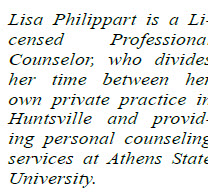Seasonal Affective Disorder
 By: Lisa Philippart
By: Lisa Philippart
In my youth, I will admit, I never understood what seasonal affective disorder was all about. How could the weather, or the fact that the sun was not shining, possibly affect how one feels to the point of depression? And then we moved to The Netherlands. I was told that The Netherlands averages about 60 days of sunshine per year! While this is not true, I did notice that with an increase in cloudier days, more than I was used to, my mood seemed to take a downward turn. Wow. Ok, now I get it. The way the Dutch combat this seemingly perpetual lack of sunlight is not in the healthiest way…many homes had their own tanning beds or, at the very least, a light box.
Let’s examine Seasonal Affective Disorder (SAD) for a better understanding of what it is — symptoms, diagnosis, and treatment. Seasonal Affective Disorder is a form of depression, also known as seasonal depression or winter depression. Symptoms of depression usually occur during the fall and winter months when there is less sunlight, and then usually improve with the arrival of spring. The most difficult months for people with SAD in the United States tend to be January and February.

SAD is much more than just the winter blues. Symptoms can be distressing and overwhelming to the point of interfering with daily functioning. About 5% of adults in the U.S. experience SAD, which typically lasts about 4-5 months of the year. It is also more common among women than men. SAD may begin at any age, but it typically starts when a person is between ages 18 and 30. SAD has been linked to a biochemical imbalance in the brain, prompted by shorter daylight hours and less sunlight in the winter. As seasons change, some people experience a shift in their biological internal clock that can cause them to be out of sync with time and their daily schedule. Daylight Savings Time, which is meant to maximize the use of daylight hours, can have a negative effect for those who tend to use their evening hours to get things done. I have noticed for me, that 7 p.m. now feels like 9 p.m.! Common symptoms of SAD include fatigue, even with too much sleep, and weight gain associated with overeating and craving carbohydrates. As you might expect, SAD symptoms can vary from mild to severe and may include many symptoms similar to major depression such as:

- Feelings of sadness and hopelessness
- Changes in appetite, usually eating more
- Sleeping too much
- Loss of energy or increased fatigue
- Increase in restlessness (pacing, shaking, etc.)
- Trouble concentrating or making decisions
- Thoughts of death or suicide

SAD can be effectively treated in a number of ways, including light therapy, antidepressant medications, and talk therapy. While symptoms will generally improve on their own with the change of season, symptoms can improve more quickly with treatment. Light therapy involves sitting in front of a light therapy box, which mimics outdoor light. Researchers believe that this type of light causes a chemical change in the brain that lifts your mood and eases other SAD symptoms. In general, the light box should provide an exposure of up to 10,000 lux of light, emitting as little UV light as possible. To be most effective, a light box should be used within the first hour of waking up in the morning and requires about 20-30 minutes. Please note: Light boxes are designed to be safe and effective, but they aren’t approved or regulated by the FDA. So, it’s important to understand the risks and options. Many see some improvements from light therapy within one to two weeks. If you are cautious about using a light box, spending time outdoors or arranging your home or office so that you are exposed to a window during the day can also have positive effects.
If you feel you have symptoms of SAD, please seek the help of a trained medical or mental health professional. Just as with other forms of depression, it is important to make sure there is no other medical condition causing these symptoms. For example, SAD can be misdiagnosed as hypothyroidism, hypoglycemia, and mono or other viral infections. A mental health professional can diagnose the condition and discuss therapy options such as cognitive behavior therapy (CBT) or rational emotive behavior therapy (REBT.) With the right treatment, SAD can be a manageable condition.
By: Lisa Philppart
Licensed Professional Counselor